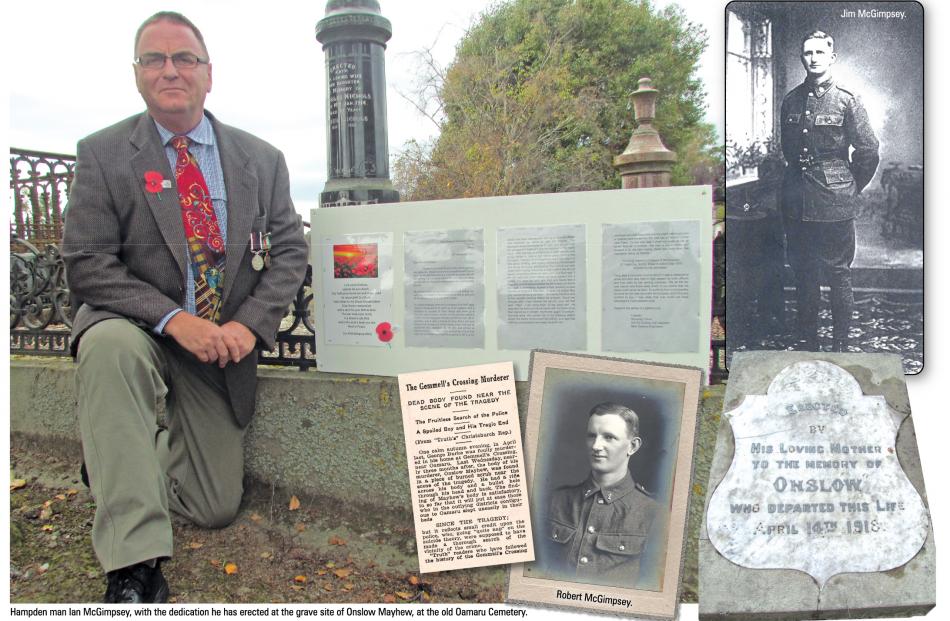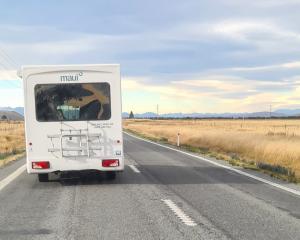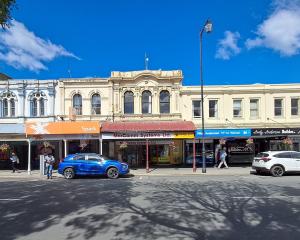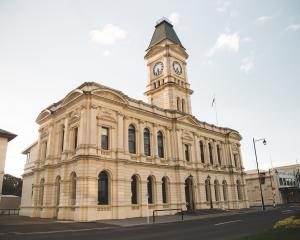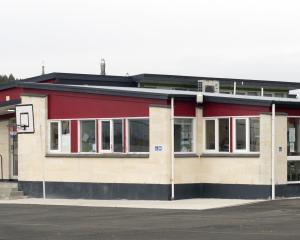Two North Otago families were united by a heartfelt letter from the front and a violent murder-suicide during World War 1. Hayden Meikle looks into the forgotten story of Onslow Mayhew, and the tragedies that resonate nearly a century later.
No-one really knows what Onslow Mayhew was thinking when he shot and killed George Burke, and wounded two women, in the kitchen of the Burke family home at Gemmell's Crossing, near Oamaru, before killing himself on the night of April 14, 1918.
But it seems clear Onslow had love in his heart just a few months earlier when he wrote a deeply sweet letter to Eliza McGimpsey, a North Otago woman who had lost two sons in World War 1.
It is the juxtaposition of the two events - the seemingly cold-blooded murder with a .303 rifle on loan from the Defence Department, and the writing of a personal note to a woman grieving over the loss of her boys - that make this an Anzac Day story less ordinary.
The link has been explored by Hampden couple Ian McGimpsey (Eliza's great-grandson) and Liz Rowe, who are keen to see Onslow, if not forgiven for his ghastly crime, at least given some sort of closure, and hope to promote an understanding of the obvious mental health issues that drove him to the edge.
They have tried without success to track down any Mayhew or Burke descendants, but have located Onslow's grave in block 129 of the old Oamaru cemetery, and spent time there this week to reflect on the man's tortured past and leave a special message for him.
"It's just a terribly tragic tale,'' Mr McGimpsey told the Otago Daily Times.
The murder-suicide ripped two families, the Burkes and the Mayhews, apart, Ms Rowe said.
"It's particularly sad because I think society really failed Onslow,' she said.
"Should he have even gone to war?''
'A spoiled son'
Onslow John William Mayhew was born in England in 1888 but grew up near Duntroon, about 40km inland from Oamaru. He attended primary schools at Kokoamo and Duntroon, and went to both Waitaki Boys' High School and Otago Boys' High School.
He played First XI cricket and Second XV rugby at Otago Boys', made the rank of sergeant in school cadets and won a trophy for shooting.
Onslow was, in the parlance of the time, a "bit of a dandy''.
His hair was always just so, and he liked to wear the latest clothing trends.
A Truth newspaper report at the time of the murder investigation referred to him as "a spoiled son''.
Evidently, he enjoyed the sensation of speed as much as liked the feel of a rifle in his hand.
In 1910, the Evening Star reported a case in front of a Timaru judge of "a young man fashionably dressed in check tweeds and wearing long motor gloves'' charged with "furious driving'' of a motor car.
Police claimed Onslow flew down Stafford St at 30mph (48kmh).
He was found guilty and fined.
Later, he was busted for hooning down Oamaru's Thames St.
Onslow worked as a clerk at the National Bank in Oamaru before joining the 8th Otago Infantry Battalion, despite initially being considered unfit on enlistment, due to a childhood bout of rheumatism.
He served in Egypt and at the Western Front, was promoted to corporal and was generally considered a model soldier.
All this despite reportedly attempting suicide before disembarking, being gassed in August 1916, suffering heart problems and tuberculosis, and being considered "very dyspnoeic'', suffering from shortness of breath.
Onslow was discharged from service on January 13, 1918.
Within three months, he had killed a man and shot himself.
The demons in his head had the final say.
The murder
It was a calm autumn evening at the Burke farm at Gemmell's Crossing but April 14, 1918 would end with two North Otago men dead and two women with serious gunshot wounds.
Onslow Mayhew, now 29 and a tall, handsome man, had drifted since returning to Oamaru, and could only find some relief from the horrors of recent war experiences through a foul brew consisting largely of methylated spirits.
He had been camping on the banks of the Kakanui River for some weeks before the fateful night, and had met and been "well treated'' by the Burkes, according to a report in the Truth.
Worryingly, though, his behaviour had started to become very erratic.
His mother, Jessie, had urged the officer in charge of defence stores in Oamaru not to let her son have a weapon.
He then attempted to borrow a rifle from a friend before the murder, the ODT reported, and had said he was "going back to the war ... I'll try to shoot the Kaiser.''
Finally, the week of the murder, he told a couple of road workers who had asked if he was hunting rabbits: "I want something bigger than that.''
Nevertheless, George Burke did not think anything was strange on the night of April 14 when Onslow visited the Burke family home and asked for milk.
He returned later and asked for some linen rags.
George fetched some and returned to the kitchen, to find Onslow with a cocked rifle.
He fired.
The bullet pierced George's lung and passed out of the spinal column, the ODT reported.
George staggered to a sofa and died.
In rushed George's two sisters, Mary Burke and Margaret Bambery.
Onslow shot both: Mary four times, in the lung and arms , and Elizabeth once, in the hip.
Both survived their wounds.
Onslow fled to a nearby patch of scrub, where he ended his own life.
His body was not found until three months later, when a Totara farmer, Peter McAuley, and his 15-year-old son stumbled across it while collecting firewood.
An empty methylated spirits bottle lay nearby.
In late July 1918, the coroner ruled his death a suicide, and declared his actions on the night of the murder to be the result of a "homicidal impulse''.
Bob and Jim
Eliza McGimpsey called them "the boys'', and after the death in infancy of her second son, John, Robert and James McGimpsey held special places in her heart.
Red-haired Robert was the first in the family to go to secondary school, and was a star swimmer, athlete and rugby player at Waitaki Boys' before becoming a government surveyor, while James was tall and quiet, and joined the Union Bank of Australasia.
Two ordinary boys, who enjoyed a rural upbringing at Otiake, 60km inland from Oamaru, and made their father, James, and Eliza endlessly proud, before their lives were snuffed out on the Western Front.
Robert McGimpsey, a sapper who was at Gallipoli, was killed in action in France during the battle of the Somme, on September 20, 1916.
James was killed just after his 21st birthday, on June 6, 1917, in Belgium.
A few months later, their grieving mother received a lovely letter from the son of another North Otago woman she knew. His name was Onslow Mayhew.
Onslow wrote of Robert's "grit and bravery'', and talked of loving his fallen comrade "as a brother'', before ending with words to bring tears to any mother's eye: We all felt the loss keenly and knew deep down in our hearts that his place could never be filled.
Peace to the ashes of a gallant soul.
Ian McGimpsey, originally from Kurow and a veteran of 20 years in the Royal New Zealand Air Force, was struck by the tone of the letter.
"Onslow was really this incredibly articulate guy. You think of him sitting in the mud in a trench, taking time to write these beautiful words to a grieving mother.''
Ian and his partner left some words of their own for Onslow at his grave site this week, and hope to make a permanent memorial for a man whose life, and another man's, ended in shocking circumstances, but whose gentle letter made Eliza McGimpsey happy.

